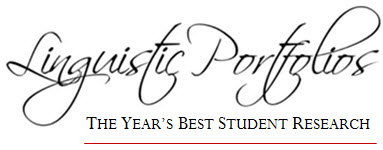
Abstract
It is an honor to write this paper for Dr. Gilbert Ansre’s festschrift. He was my mentor when I was doing my Ph.D. in linguistics. In the summers, the United Bible Societies would send me to study under him as a translation-consultant in training. He challenged me and coached me in applying theoretical linguistics concepts to real life language problems. When I received my Ph.D. and joined him in Togo, West Africa, he congratulated me saying, “Now, you are going to do real linguistics." This was an absurd statement at first, but over the years, I keep discovering its wisdom. The mentoring that Dr. Ansre provided helped me to improve on the existing orthographies of the languages under my supervision. The lack of tone marking in these languages made the reading of the Holy Scriptures a herculean task, even for the translators themselves. The quest for solutions led me to pioneer an orthographic approach to tone marking known as Tone Optimality Model (Koffi 2012:230-232). It is deeply anchored in acoustic phonetics and influenced by Dr. Ansre’s view that orthographies need not be overcrowded with superfluous diacritic marks. The model that I came up with marks tones systematically, yet sparingly. This paper describes and exemplifies how the same model was used to transcribe three tonally contrastive moods in the New Testament of Anyi Morofu, an Akan language spoken in Côte d’Ivoire. This festschrift is a fitting tribute to Dr. Gilbert Ansre whose book, Tonal Structure of Ewe (1961), is highly regarded for its seminal contribution to contemporary understanding of the tonal structure of West African languages.
Creative Commons License

This work is licensed under a Creative Commons Attribution-NonCommercial-No Derivative Works 4.0 International License.
Recommended Citation
Koffi, Ettien
(2021)
"An Acoustic Phonetic Analysis of Three Tonally Contrastive Grammatical Moods in Anyi: Orthographic Implications - A Festschrift in Honor of Rev. Dr. Gilbert Ansre,"
Linguistic Portfolios: Vol. 10, Article 5.
Available at:
https://repository.stcloudstate.edu/stcloud_ling/vol10/iss1/5



Author Bio
Ettien Koffi, Ph.D. linguistics, teaches at Saint Cloud State University, MN. He is the author of four books and author/co-author of several dozen articles on acoustic phonetics, phonology, language planning and policy, emergent orthographies, syntax, and translation. His acoustic phonetic research is synergetic, encompassing L2 acoustic phonetics of English (Speech Intelligibility from the perspective of the Critical Band Theory), sociophonetics of Central Minnesota English, general acoustic phonetics of Anyi (a West African language), acoustic phonetic feature extraction for application in Automatic Speech Recognition (ASR) and Text-to-Speech (TTS), and voice biometrics for speaker verification. He can be reached at enkoffi@stcloudstate.edu.